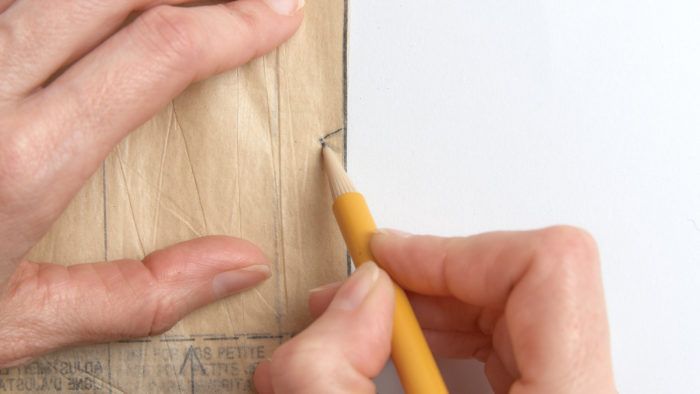10 Patternwork Skills
Key refinements for accurate sewing
When I fit a garment, I work with a muslin on the body. Then I transfer the changes from the muslin to the original paper pattern. Some sewers like to dismantle a fitting muslin and use the fabric pieces as a pattern. I don’t because the muslin can become distorted during the fitting, sewing, and disassembly process.
A paper pattern is stable and, therefore, delivers the precision I demand of a pattern, especially one I’ll want to use more than once. First, I walk and true all the seamlines on the original pattern, to ensure they are accurate. After I’ve finished a fitting and made my adjustments to the paper pattern, I refine it to correct any issue that occurred through transferring fit changes from muslin to paper.
This work requires nothing more than a pencil, a straight ruler, and a curved ruler. It’s worth the time. Your pattern will be more accurate and easier to sew. You’ll also gain confidence in handling commercial and self-drafted designs and will be able to make changes for fit or style.
Think seamlines
When doing your initial pattern-work, ignore the seam allowance and cutting line. For beginners, I suggest cutting off the seam allowances. I do this, too, when I’m tackling an intricate or confusing patternmaking issue. Modify and correct all the seamlines, then add the seam allowances.
Draw the seamlines on the patterns if they’re not provided. Use a ruler to ensure the seamlines are accurate and precise. Imprecision in your pattern-work means you have more to question when sewing the garment. I keep my patterns true to 1/16 inch; many sewers find accuracy to 1/8 inch works well. A see-through ruler with a 1/8-inch grid also has edge markings at 1/16-inch intervals, so it’s easy…
Start your 14-day FREE trial to access this story.
Start your FREE trial today and get instant access to this article plus access to all Threads Insider content.
Start Your Free TrialAlready an Insider? Log in


































Great article! You recommend cutting off the seam allowances of the pattern in the beginning but how do you then sew a muslin without seam allowances? I was taught to transfer the seam allowance onto the muslin with a pencil, sew, then bring it back to the pattern to examine the differences and make your changes. Secondly, I've noticed with many commercial pattern, the ease that they provide is way more generous than a ready-to-wear outfit which makes homemade close look frumpy. Especially if you don't have a waistline or hips that match the patterns measurements. How do you recommend adding back "ease' once you've fitted the pattern? (wovens, not knits).
You can add the seam allowances to the pattern after you've made the fitting changes, or just draw the allowances on the muslin--your preference.
As for adding ease, again, this is completely up to you. We often recommend measuring a garment you already own that has the amount of ease you prefer, and use it as a guide for adding ease to patterns.
Carol Fresia, Threads Senior Technical Editor
This is a wonderful article. I've never walked the seam lines of commercial patterns before but I KNOW I've sewn patterns where things just didn't line up. I've always assumed it was a mistake on my part but maybe not. Thanks for these tips! This is why I love Threads!
I think except for the too long too short seam line ups, I knew most of this info before, but I wasn't using it consistently. I have printed out this article. It will be my go-to for the beginning stages of my pattern - muslin work. I can think back to various patterns where hassles would have been eliminated if I had done this patternwork first. I imagine it is like any activity that seems too complex to use at the beginning, but once you have done a few times it clicks, into one cohesive "how to" and its clear sailing after that. The one thing I have been consistent about are the HBLs. I actually splatter them up and down the pattern. I add notches for them as well, as I think it makes sewing the seams accurately, easier.
Thanks for your many helpful articles. I love it when someone takes a complex action, clarifies and simplifies. Patternwork definitely fits in that category.